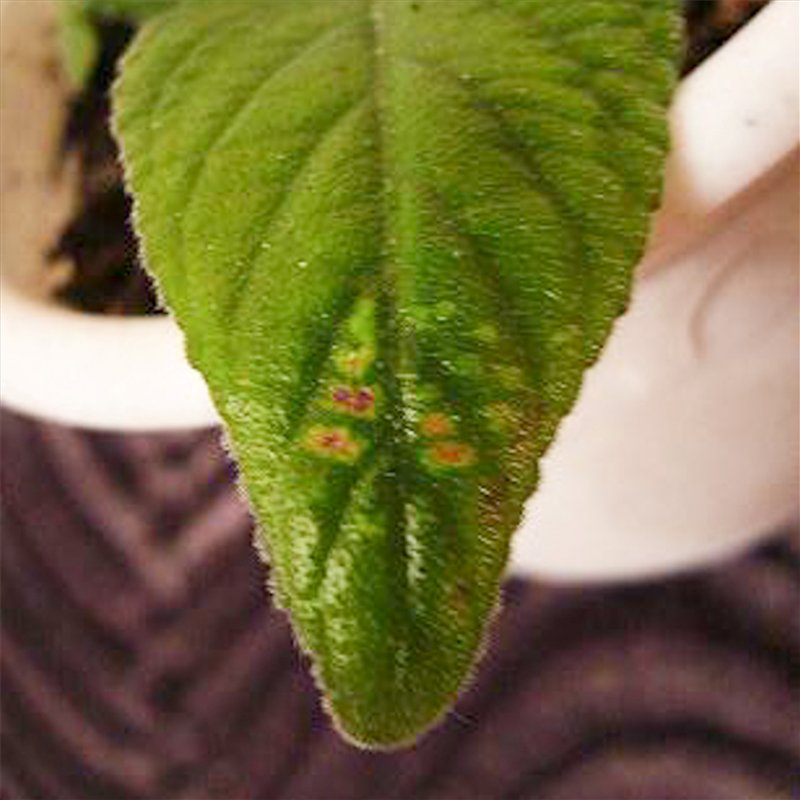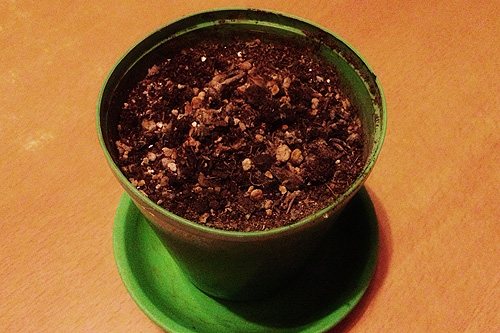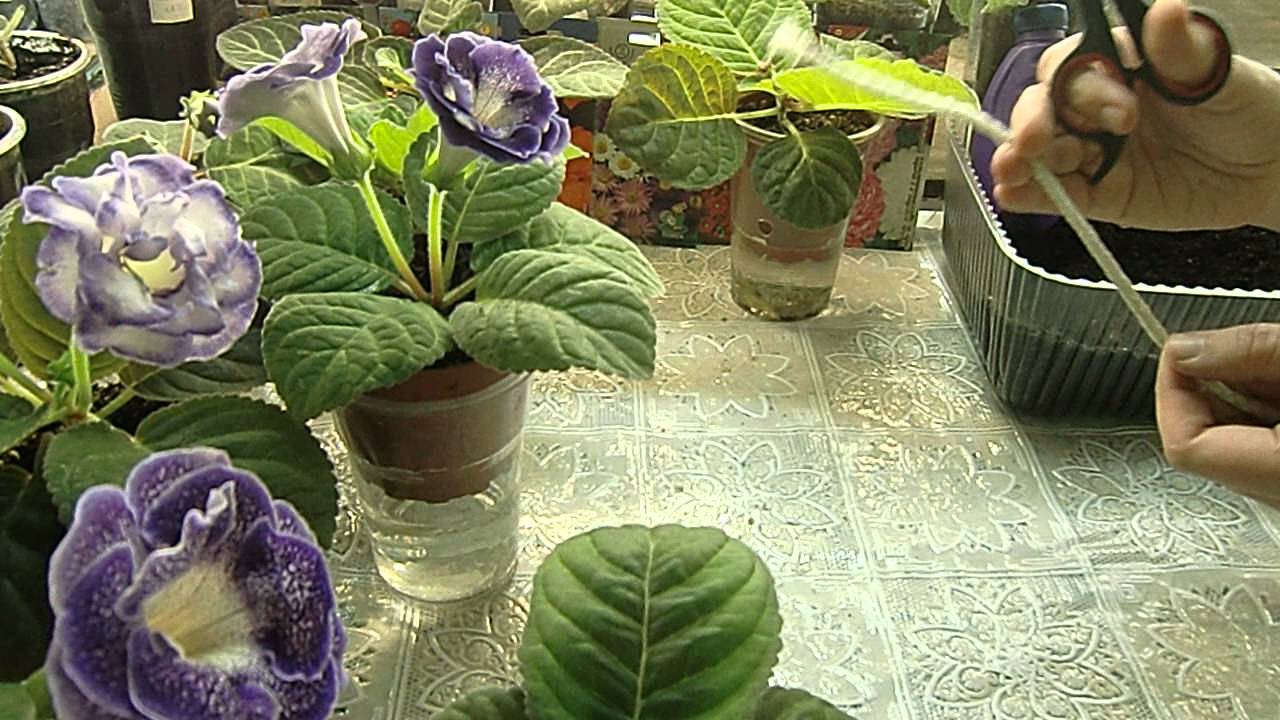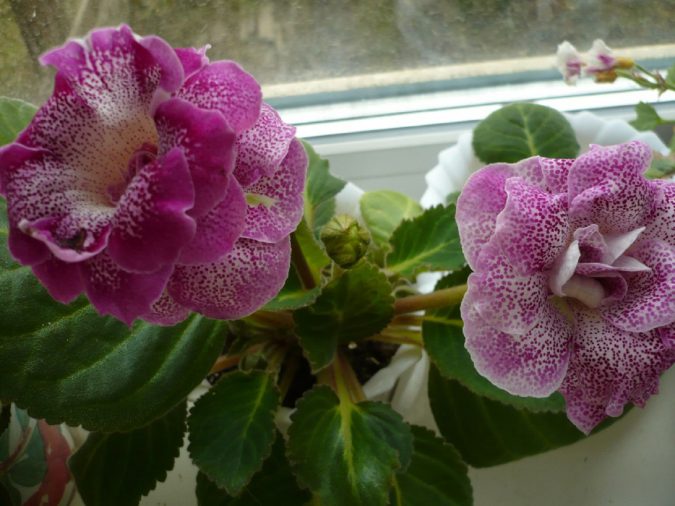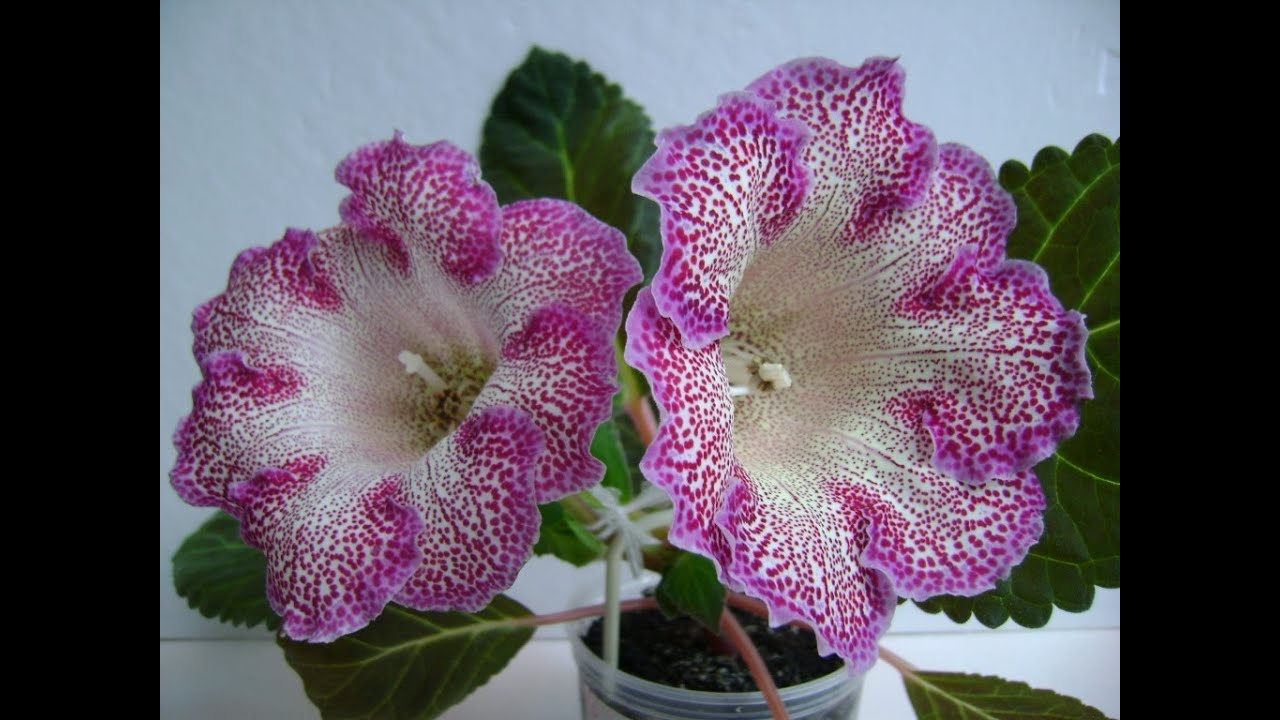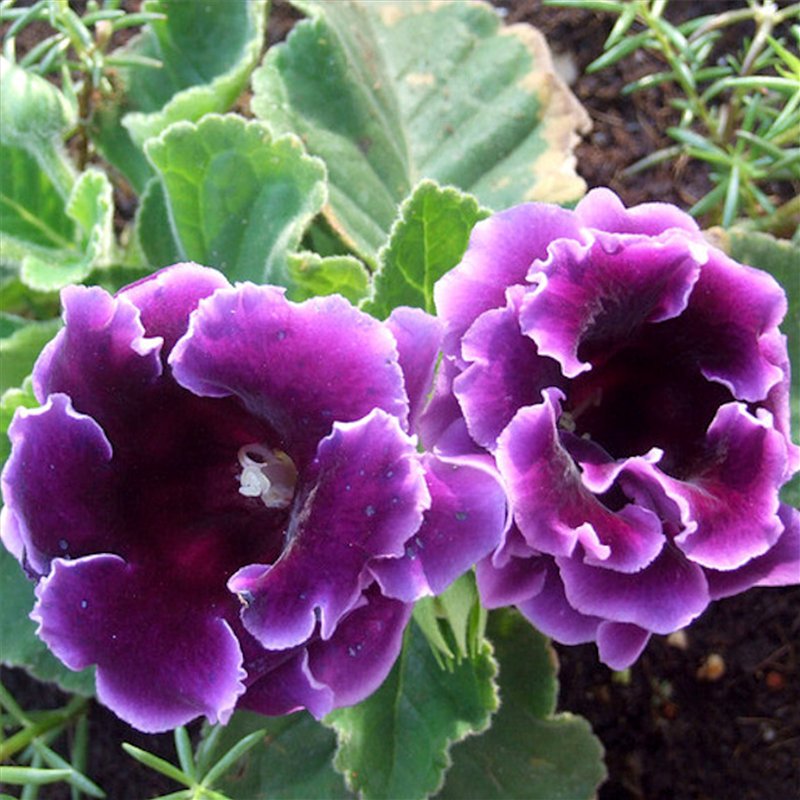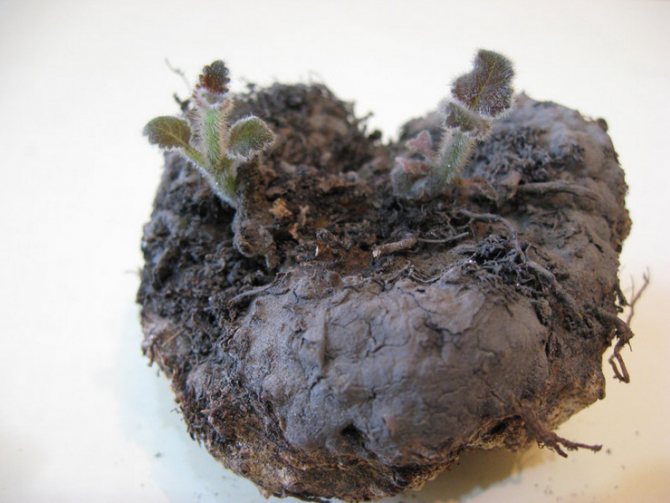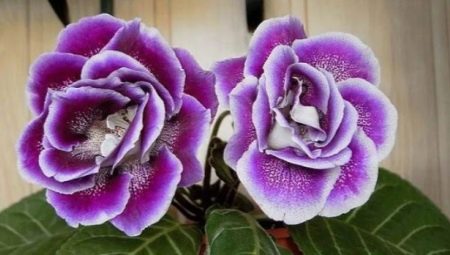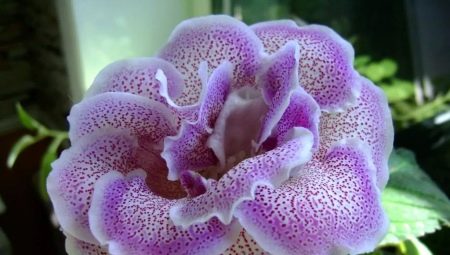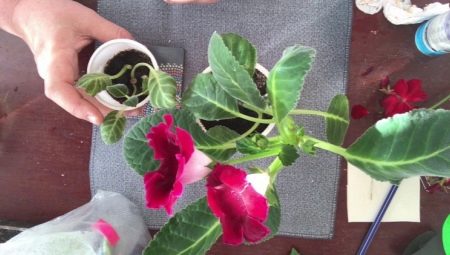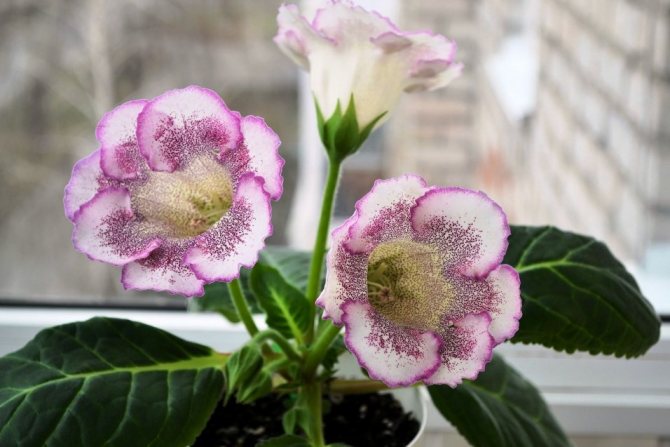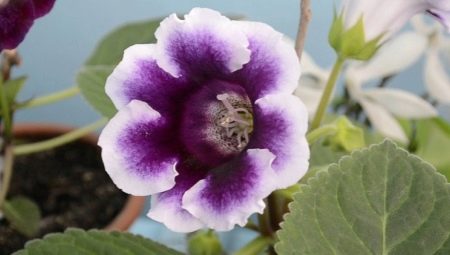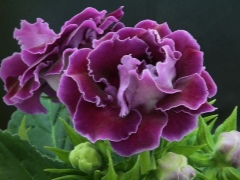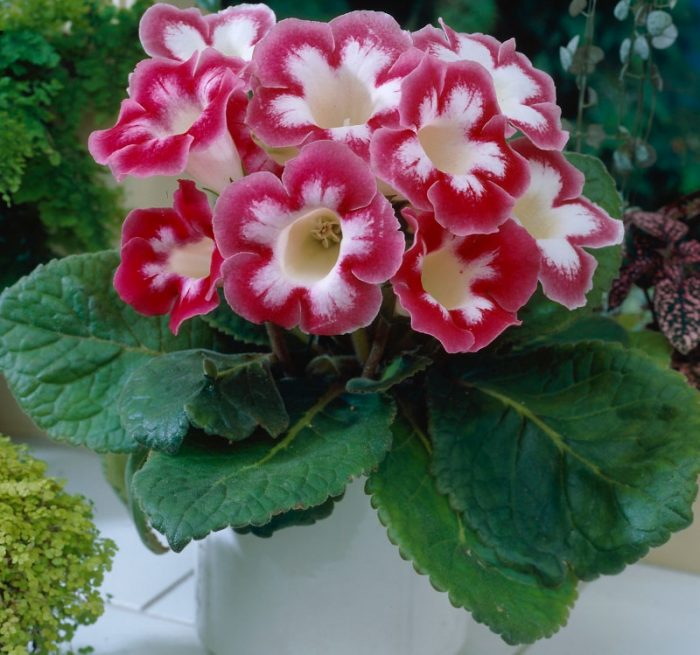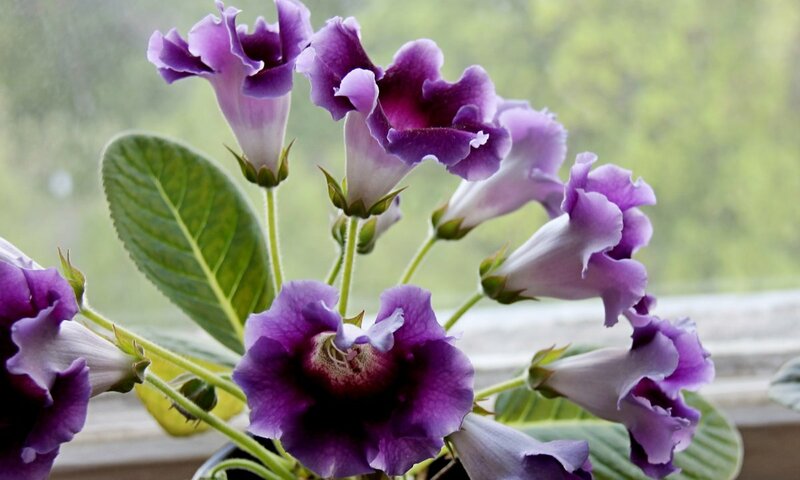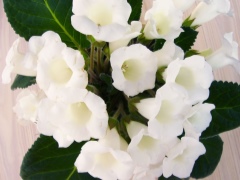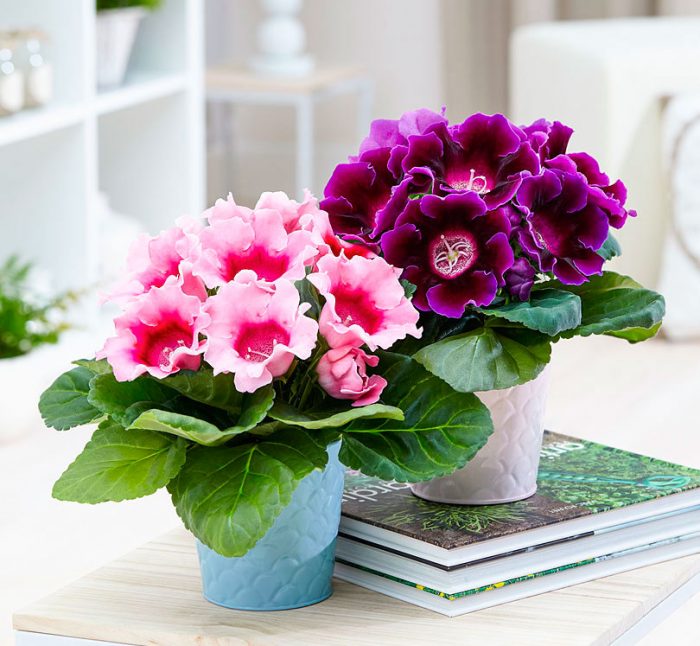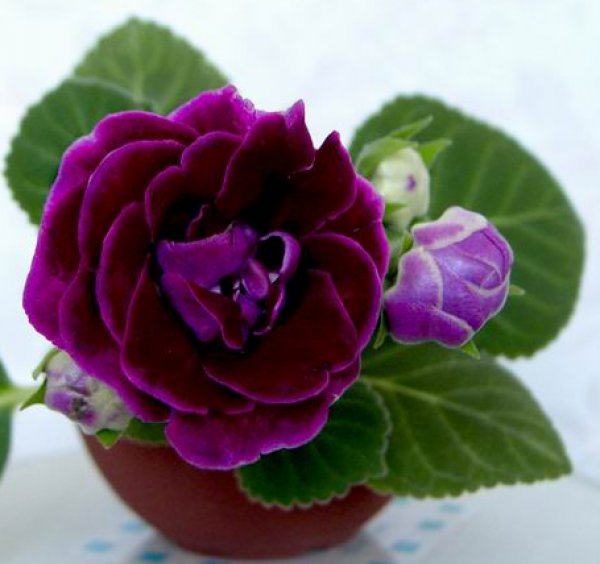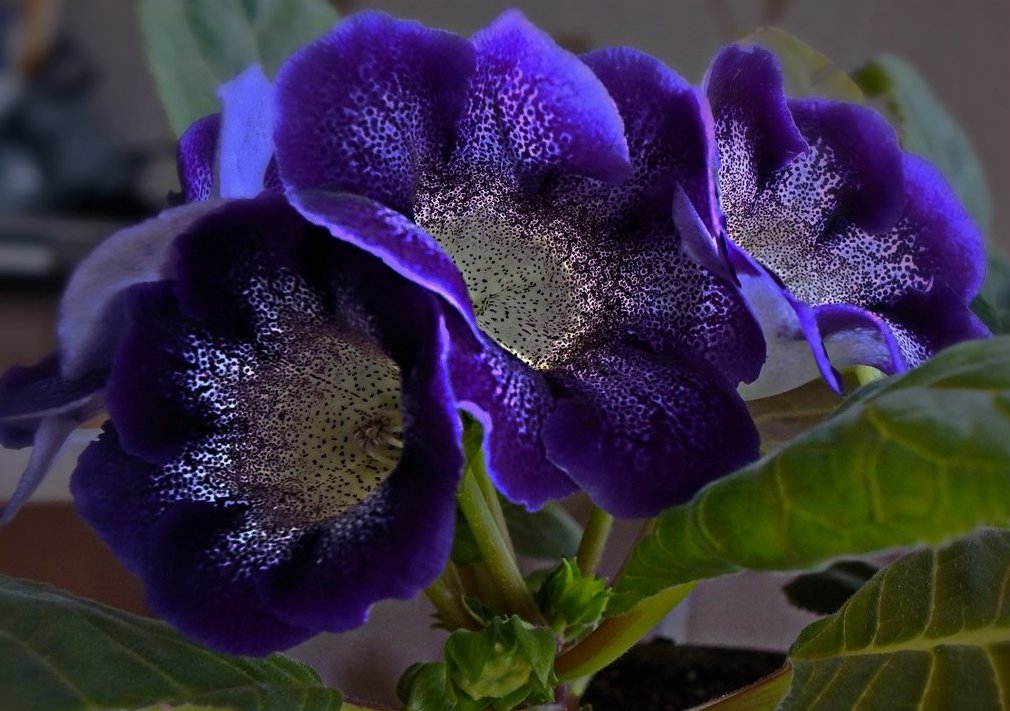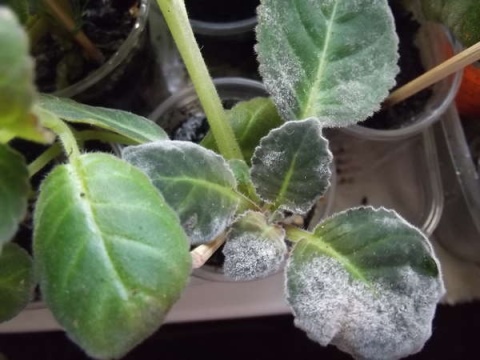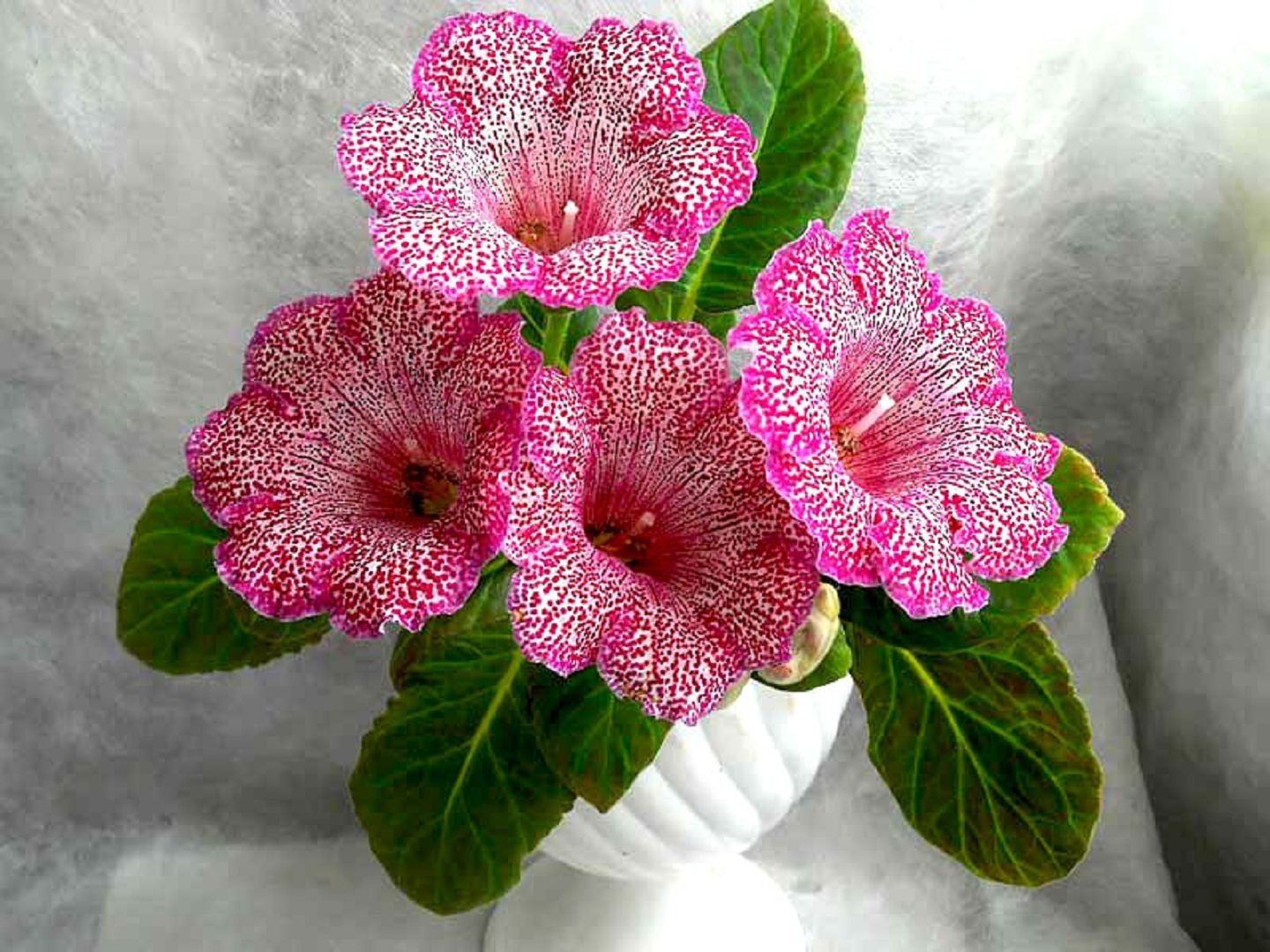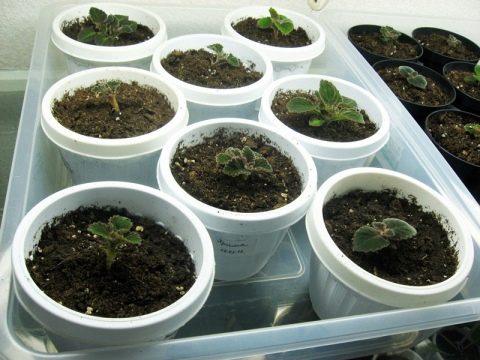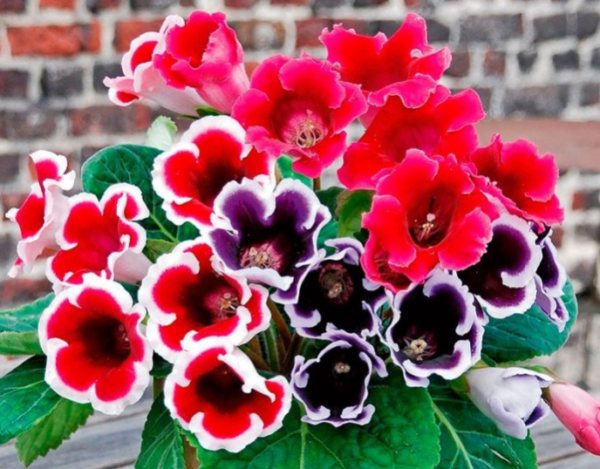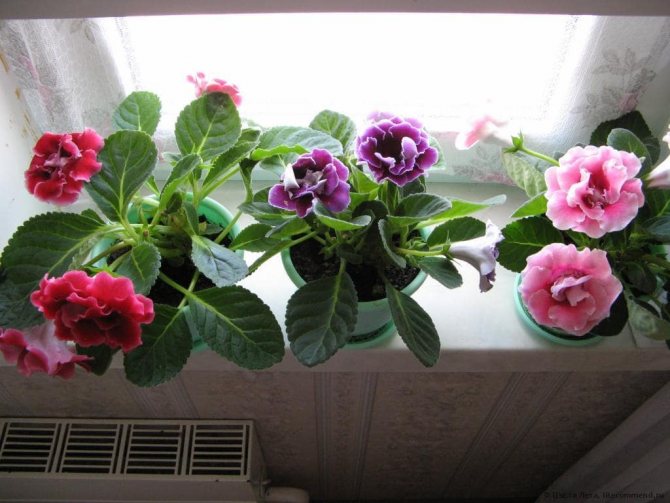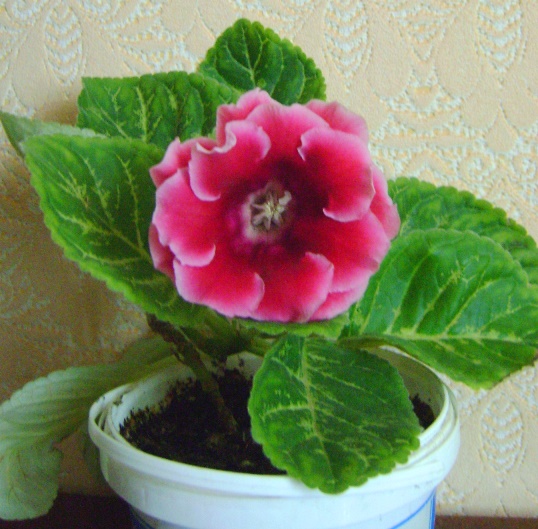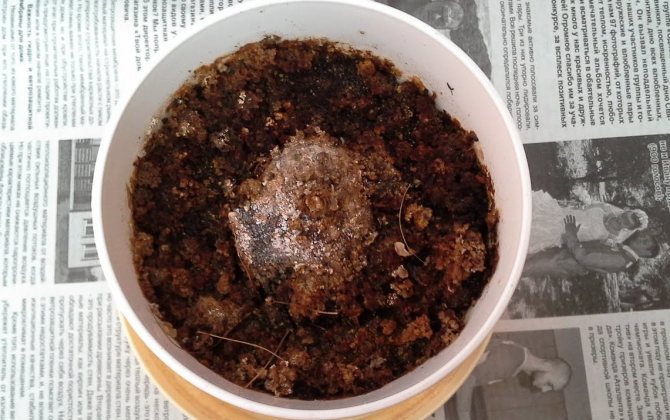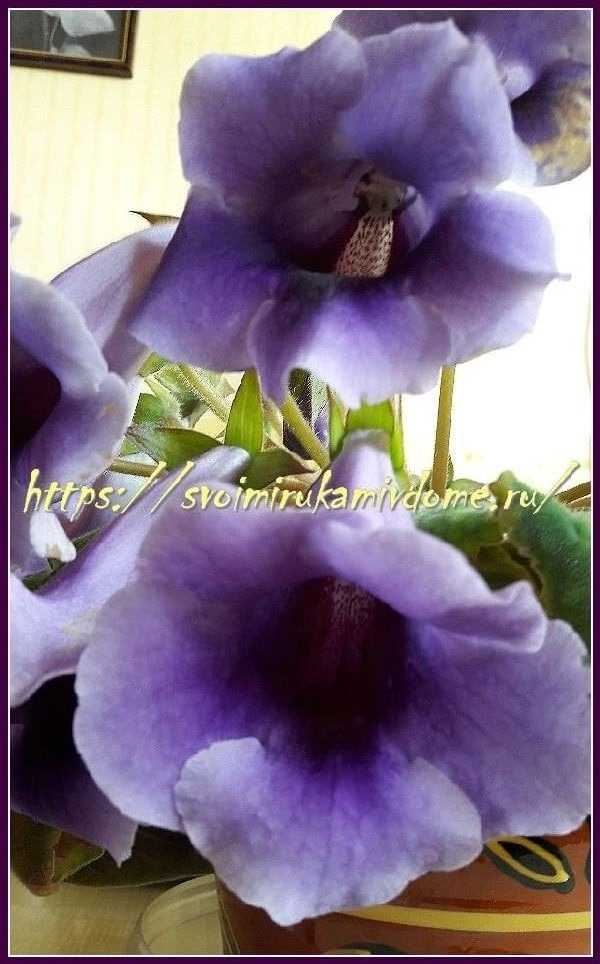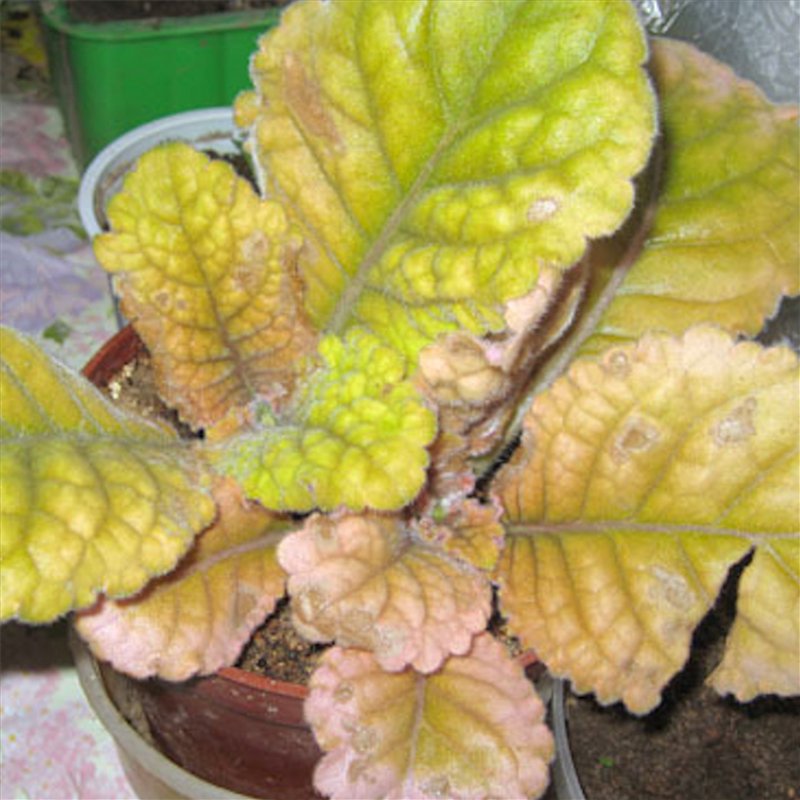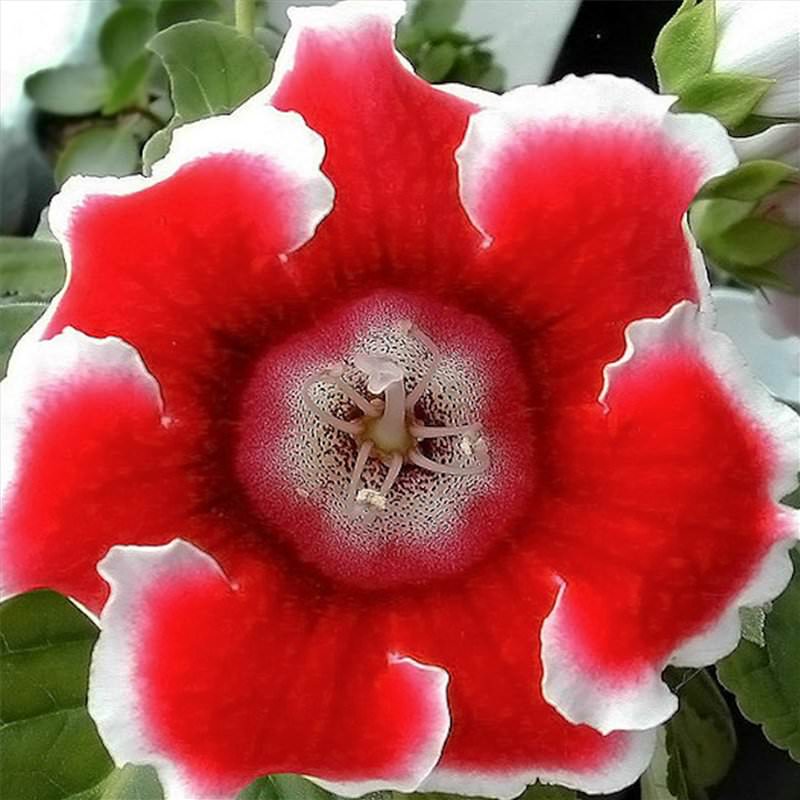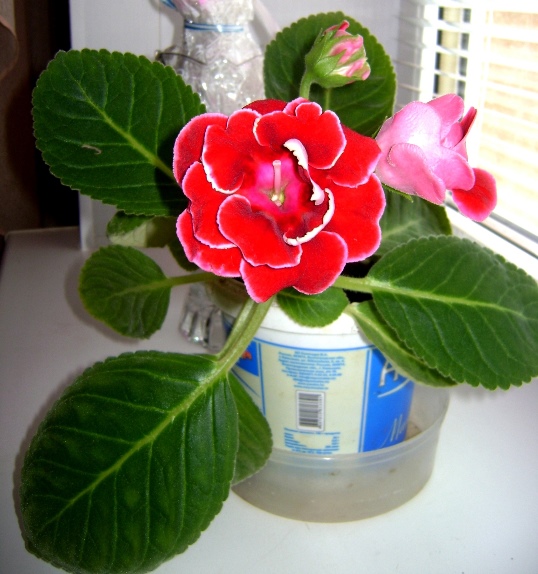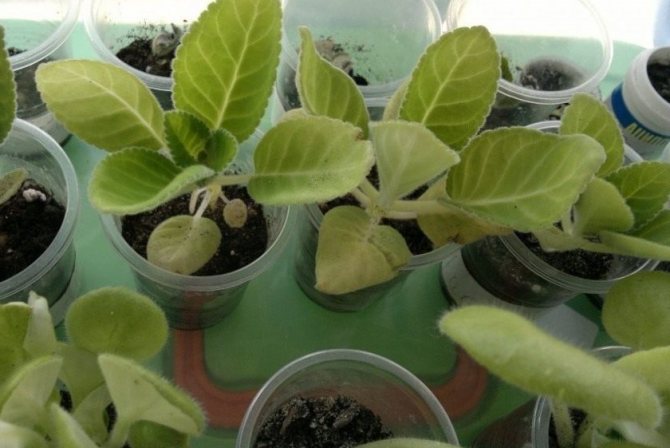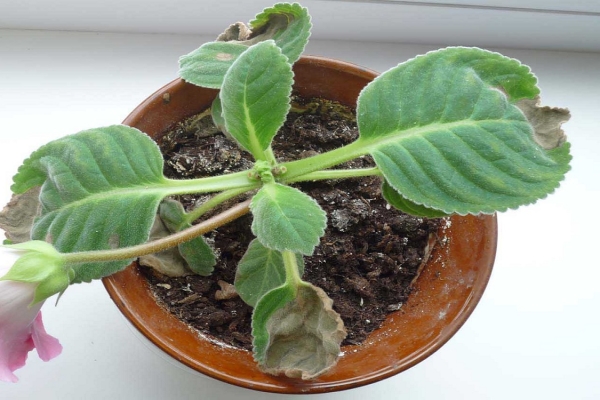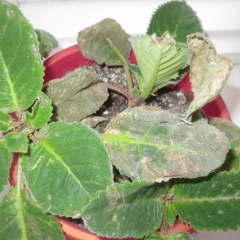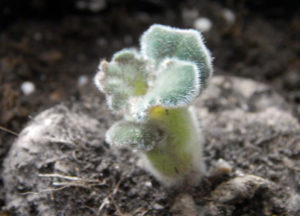Possible problems and diseases
Forewarned is forearmed. Let's analyze all the troubles that can overtake gloxinia.
Diseases:
- Rotting tuber.
Excess moisture in the soil, too much nitrogen fertilization, as well as water that has got to the point of growth can lead to root decay. The symptom is drooping leaves that do not rise after watering. You should dig out the root, examine it.
If the growing point rots, then you need to root the strongest cuttings, and discard the root. If the rot is in another place, it must be cut off, and the root should be held in a purple solution of potassium permanganate for 15-20 minutes. Sprinkle the cut with charcoal. Leave the tuber to dry for 3 days. Then put it back in the pot.
- Late blight.
At first, the plant simply withers, and then all its aboveground parts begin to rot. It is too late to save, it is necessary to get rid of the infected flower in order to save the rest of the plants from infection.
- Fusarium.
Dark stripes on the stem, brown spots on the root collar and brown wilting leaves. Only at the initial stage can you try to cope with the disease by treating it with a fungicide.
Pests: thrips and red spider mites. When viewed, insects can be found on the stems and on the back of the leaf.
Systemic insecticides are used to combat. In addition, it is necessary to increase the humidity of the air, which the pests do not like.
Other problems:
- Falling buds. This is due to insufficient daylight hours and a lack of trace elements.
- Reddening of the leaves occurs with a lack of phosphorus.
- Yellow leaves are a sign of over-watering and a lack of nitrogen.
- White leaves indicate a lack of magnesium.
- Leaf rolling occurs in conditions of low air humidity.
- The appearance of various spots of a non-infectious nature can be the result of sunburn, cold water for irrigation or drafts.
- Inhibited plant development and crumpled flowers indicate that the air temperature is too low.
- Low peduncles, twisted leaf edges, irregularly shaped flowers can be the result of excessive watering.
- Decay of buds and petioles occurs with excessive watering, increased acidity of the soil and an excess of nitrogen supply.
- The lack of flowering is a consequence of improper care, lack of a dormant period and non-compliance with the conditions of detention.
Gloxinia after flowering - what to do with the plant
Experienced plant owners can tell you how to care for gloxinia after flowering. During this period, you need to properly prepare the plant for wintering. This procedure consists of several steps that must be followed in order for the tuber to safely survive a long hibernation.
Pruning
It is not recommended to cut the rosette immediately after the last flowers have faded. It is necessary to preserve metabolic processes in plant tissues, due to which nutrients from the leaves are transferred to the tuber.
Subsequently, the shoots will begin to wither themselves, and then you need to cut off the outlet, but leave a small stump 2 cm high. As a result, when it also dries up, it must be carefully unscrewed from the tuber.
Important! Pruning gloxinia immediately after flowering will stimulate shoot growth, which will significantly weaken the plant. In young seedlings, the rosette remains throughout the winter.
This is due to the fact that their tubers are underdeveloped and are not yet able to survive the winter without additional nutrition. Therefore, it is impossible to cut off the aerial part from them, otherwise they will never come out of hibernation.
In young seedlings, the rosette remains throughout the winter. This is due to the fact that their tubers are underdeveloped and are not yet able to survive the winter without additional nutrition. Therefore, it is impossible to cut off the aerial part from them, otherwise they will never come out of hibernation.
In this case, you need to provide the plant with full care, which consists in a 12-hour daylight hours and regular watering.
Restorative feeding
What else should you do when gloxinia fades? Before the plant goes into hibernation, it is necessary to restore the spent strength. For this, it is recommended to fertilize with potash fertilizers. This will allow the tuber to fully ripen and make a supply of nutrients that will be required for 3-4 months of hibernation.
Experienced flower growers recommend using potassium monophosphate for this. To prepare a nutrient solution, you need to dissolve 5 g of the product in 2 liters of settled water. After that, mix thoroughly until the components are completely dissolved. Water the plants with the resulting liquid at the rate of 150 ml per 1 pot.
Important! Fertilizers with a high nitrogen content cannot be used during this period, since they stimulate the growth of the aerial part, which negatively affects the immunity of gloxinia. Restorative dressing is applied one-time, immediately after the removal of all faded buds, but in the presence of leaves
Restorative dressing is applied one-time, immediately after the removal of all faded buds, but in the presence of leaves.
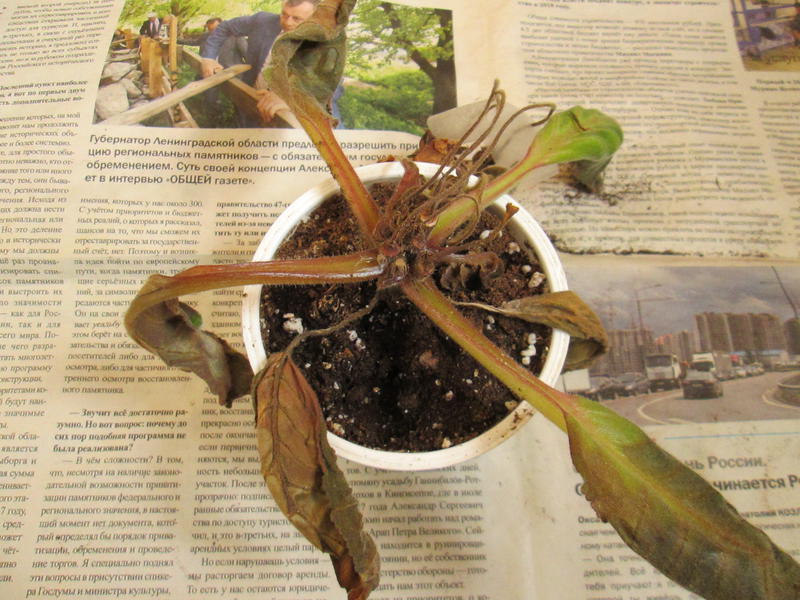
Drying of the outlet is a sign of gloxinia preparation for hibernation
Preparing the plant for hibernation
Caring for gloxinia after flowering at home also consists in observing certain conditions of detention. Starting in September, the flower pot must be moved to a less lit place. In this case, the temperature should be lowered to +15 degrees. When kept in such conditions, watering should also be reduced to 1 time per week.
All this in a complex stimulates the process of wilting of the rosette and prepares the plant for the upcoming hibernation.
If this is not done, then some varieties of gloxinia can continue to grow. As a result, the shoots stretch out, the rosette is deformed, and the plant loses its decorative effect. All of this weakens the flower and can be the reason for the lack of flowering in the next season.
Important! Gloxinia, like many tuberous plants, requires a prolonged cool dormancy period for bud formation.
Wintering features
Attention: Winter for adult indoor gloxinia is a rest period. A plant that bloomed at least once and managed to grow tubers enters a state of dormancy
The larger the tuber, the better it is stored. A young specimen of the first year of life may not fall asleep for the winter.
When to retire? This should not be done forcibly. Such gloxinia has a small tuber less than two centimeters in diameter, which, under wintering conditions without watering, can dry out and die. A young plant needs special care in the winter season:
- Provide the correct temperature regime. Indicators should not rise above + 20 ° C. If the room is too hot, the stem will stretch to the detriment of tuber growth.
- Watering less often than in the summer season (read here how to properly water and feed gloxinia for long flowering). Otherwise, waterlogging will lead to root rot.
- Arrange backlighting. Daylight hours should last at least 12 hours a day. In the absence of additional lighting, the flower is strongly stretched. To prevent this, the room temperature is reduced to + 18 ° C. Or at the end of February, a long stem is cut, leaving only the lower leaves.
For details on what to do next after the gloxinia has faded, read here, and from this article you will learn about the features of flower care at home.
Gloxinia pests and diseases
Unfortunately, gloxinia, like other flowers, suffers from diseases that are usually the result of improper care. Gloxinia is affected by gray rot, which is manifested by brown spots on the leaves. It is necessary to deal with it by treating the plant with a fungicide, after removing all damaged areas. But most often the plant is sick with root rot: the roots turn dark brown, the stem rotting at the base and the plant dies. This happens from constant waterlogging of the roots or watering the plant with too cold water. In addition to the named diseases, protect gloxinia from late blight, black leg, powdery mildew and fungal diseases. For preventive treatment, use phytosporin, for treatment - foundationol.
Viral diseases will also not bypass gloxinia, especially if thrips, cyclamen or spider mites start on it, so try not to allow this.
A cyclamen mite can only be seen under a microscope, with the naked eye you can only detect a large accumulation of mites that looks like a layer of dust on the underside of the leaf plate, but if the leaves of the plant begin to deform and thicken, and curl down at the edges, if the stem twists, the buds wither , the petals of the flowers are deformed, and the tops of the shoots are drying up, which means that the flower is occupied by cyclamen mites.
The spider mite is also almost invisible, it also settles on the underside of the leaf and feeds on the cell sap of the plant. You can understand that you are dealing with a spider mite by the white dots, which later turn into yellow-brown spots, or by the thin web, if the infection is already in a very strong stage.
The presence of thrips is revealed by light dots, strokes and spots on the leaves and a silvery sheen of intact leaf areas, which dry out over time, turn brown on the underside, and the edges begin to curl upward. The larvae of thrips go into the soil, therefore, to combat the pest, you will have to change the top layer of the substrate, or it is better to replace it with a new one, but before that, carry out a triple treatment of the plant with insecticides (aktara, karbofos, fitoverm, actellik) at intervals of a week. The same measures are effective in the fight against ticks, but the soil does not have to be changed.
Hippeastrum: growing, transplanting, reproduction
After this article, they usually read
Add a comment
Gloxinia after flowering: what to do, where and how to store tubers
There are two methods to keep the tubers intact during the winter.
During the storage period, there is a risk of developing fungal or any other diseases. It is improper storage that most often becomes the cause of the appearance of diseases. A sharp and frequent change in temperature, dampness lead to problems with gloxinia in the future.
Note! Under proper storage conditions for planting material, the plant can wake up earlier than usual, in the first decade of February. Then the first buds will begin to bloom in the first half of March.
Flower tubers
Pot
After the flower has bloomed, it can winter at home. In this case, the tubers are left in the pot.
What to do when gloxinia fades and how to store tubers in a pot:
- moisten the soil with a little water around the edges of the pot. Abundant watering is fraught with rotting roots and the appearance of mold, so it is better not to overdo it with it;
- sprinkle containers with tubers with sand, cover them with a pallet and wrap them in a plastic bag;
- then the containers must be rearranged in a dark, cool place;
- the main thing is that the room in which the planting material is located is not damp, otherwise all tubers will be covered with mold and they can be thrown away.
Note! The optimum temperature for storing planting material is 12 ° C. Gloxinia tubers need to be watered regularly with a little water
As a rule, by the end of January - beginning of February, the first sprouts begin to appear from the planting material. This is the first signal that the flower needs to be removed into the house and transplanted into a new soil.
Gloxinia tubers need to be watered regularly with a little water. As a rule, by the end of January - beginning of February, the first shoots begin to appear from the planting material. This is the first signal that the flower needs to be taken into the house and transplanted into a new soil.
This method is most preferable for young gloxinia tubers, which retire for the first time.
Storage of planting material
Plastic bag
The second storage method is in a package.
Step-by-step process of storing gloxinia tubers in a package:
- Gently remove the gloxinia tubers from the pot, clean the earthen ball with your hands, then rinse them under a weak stream of water.
- The main thing during washing is not to damage the tubers.
- Spread the washed planting material on a towel to dry.
- When the tubers are dry, you need to carefully examine them. Weak and thin roots are cut off.
- For storage, it is better to take not an ordinary plastic bag, but a bag with a zip-lock fastener.
- Pour a few tablespoons of peat into the bag, the same amount of vermiculite and add a few tablespoons of water.
- Stir the soil until smooth.
- Then place the tubers in it, shake the bag so that the roots are in the ground.
- Close the bag so that there is no air in it.
For your information! It will be easy to see through the transparent bag if mold suddenly appears or the roots begin to rot.
If during the inspection it turned out that mold has nevertheless appeared on the planting material, you need to immediately take measures before it is too late.
What to do if the tubers become moldy:
- Remove the planting material from the bag.
- Trim the damaged area.
- Sprinkle the cut with crushed charcoal.
- Spread the tubers in the fresh air and dry them.
- Then put it back in the bag.
In this case, it is better to throw out the old soil and make a new one. If you re-fill the planting material with the old substrate, there is a high probability that the mold will reappear.
Mold on tubers
This method of storing planting material is used most often. It is suitable for adult plants, which are sent for a dormant period for several years.
Gloxinia after flowering needs special care and rest. This is necessary so that the flower gains strength over the winter and begins to bloom as quickly and abundantly as possible in the spring. When storing gloxinia tubers, you need to take into account a number of nuances so that they do not die or become infected with any diseases.
How to make bloom at home?
Why does the plant not bloom, but produces buds, which then dry up and what to do? There are several reasons for this problem. It is necessary to eliminate them and create the right conditions for the plant.
Let's consider the most effective solutions:
How to feed gloxinia for abundant flowering? Any complex, preferably in liquid form, mineral fertilizer, which is intended for flowering plants. Do it 3 times a month, starting two weeks after spring planting. Young seedlings begin to feed when new shoots with leaves appear. Feed until autumn. If fertilizer is not on hand, pour an ash solution over the flower.
Give more light! Gloxinia is very fond of sunlight, it needs 12-14 hours of daylight hours in order to release flower stalks. In spring, it is necessary to supplement the plant. For this, phyto-lamps, or fluorescent lamps with suitable characteristics are used.
Put her in a suitable pot! If the gloxinia is in a container that is too spacious, then it will not bloom. A wide and low pot of small volume is required (you can read more about what size a pot is needed for the healthy development of gloxinia in this material).The soil in the pot should be slightly larger in volume than the tuber itself (and you can learn more about how to choose the best soil for gloxinia here).
Be careful with nitrogen! If your gloxinia has thick leaves and dark green stems. There are a lot of leaves, that is, perhaps there is nitrogen overfeeding. Either there is too much humus in the soil, or the wrong fertilizer was chosen with a high percentage of nitrogen. Or both. You can fix it only by transplanting the flower into poor soil with a high content of peat (you can read more about transplanting gloxinia here). Feed only the correct fertilizers and in accordance with the instructions.
Is the girl warm to you? If the room where the gloxinia pot stands is cool, then flowering will not occur. Content is required at a temperature of 20 to 25 degrees. This also includes the presence of drafts and a cold window sill, from which the soil in the pot has a low temperature.
The radiator is the enemy of plants! During the heating season, plants may suffer from too low humidity, hot dry air rises from the radiators directly to the plants on the windowsill. Build a protective screen, or create moist air around the flower. You can put a tray with water, or spray water from a spray bottle into the air. Only on a flower in any case do not fall!
Have a rest, or not? Gloxinia should rest for 4 months in winter. The tuber is dug up and stored in a cool dark place, in a bag with slightly damp sand. If the rest did not last long, there were not the right conditions, then the plant will not be able to fully bloom. In the case of young plants that have not yet grown a tuber, it is left in a pot. But they are also removed to a dark place with a temperature of 12-15 degrees.
It is important not to allow the soil to dry out during this period. It is unlikely that it will be possible to make the plant bloom in the event of an inadequate rest.
Possible difficulties
With proper care, the tropical beauty gloxinia can live up to 10 years, delighting its owners with colorful flowering. Moreover, the older and more developed the plant, the more flowers it will have. Sometimes their number reaches 50 pieces!
- Gloxinia leaves have brown spots - this indicates water ingress on them, as well as the use of too cold water for irrigation.
- Gloxinia leaves turn yellow - a sign of dry or too humid air, direct sunlight or an excess of fertilizer.
- Gloxinia leaves curl - this happens with excessive feeding and when exposed to drafts.
- Elongated, pale leaves are a sign of a lack of lighting.
- Plaque of gray color on flowers and leaves - this indicates the defeat of the plant by gray rot.
- The flowers remain hidden under the leaves - this happens with a short day of light or too low a temperature.
Gloxinia is a beautiful houseplant
, which requires proper care, especially in the autumn-winter period. Winter is a resting time for gloxinia
... If the flower is not provided with rest in the fall and preparation for winter, it will lose its attractiveness, begin to stretch and will not bloom profusely in spring.
In November or December, when the plant stops blooming
, you need to stop watering and move it to a dry and dark place.
In the place where the flower will be stored, there must be good ventilation and the temperature regime of the air should be from 12 to 14 degrees.
After the death of the aboveground part, it must be removed
, leaving a small barrel one centimeter in size. The flower has a dormant period.
Before sending a flower for a dormant period, its tubers must be cleaned of the ground, rinsed thoroughly in cold running water and dried. If it is poorly dried, the decay process will be inevitable.
.
It is advisable to store it until spring in river sand with the addition of sawdust. River sand must be washed, calcined in the oven for prevention, and then mixed with wet sawdust.
The prepared composition must be placed in a regular plastic bag and the tuber should be placed in it. It is necessary to store the container with the tuber in a cool and dark place.

